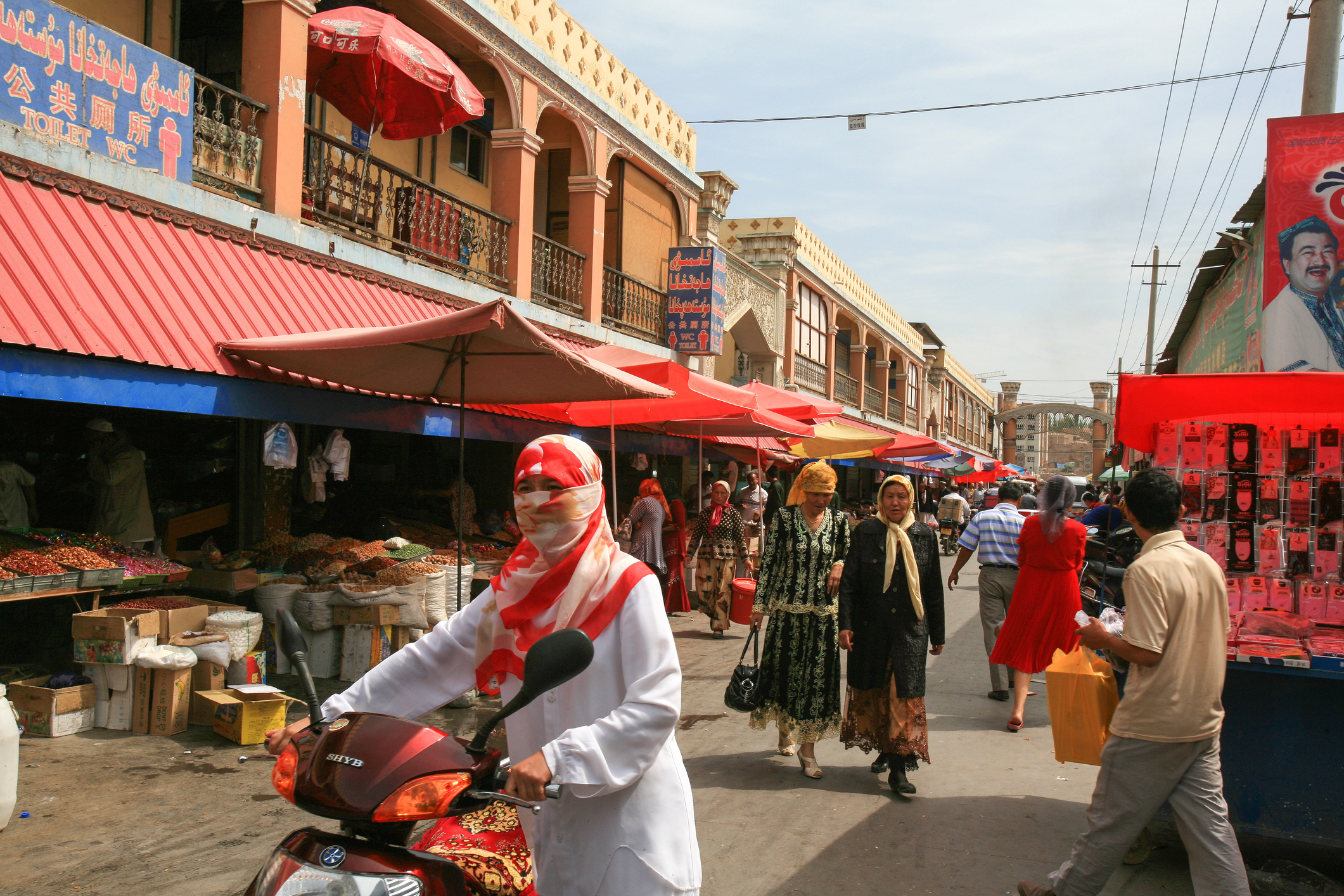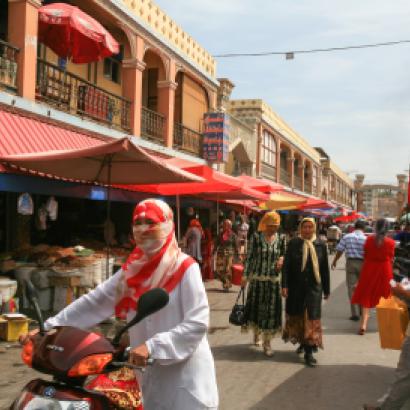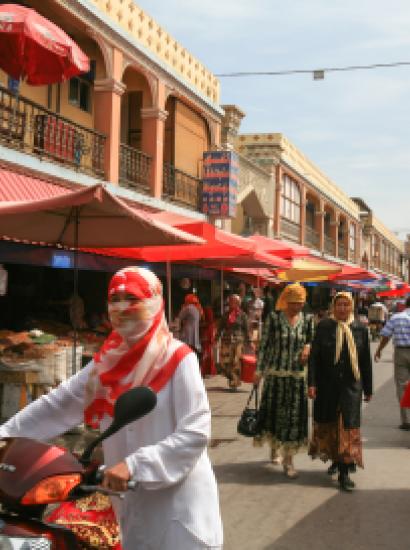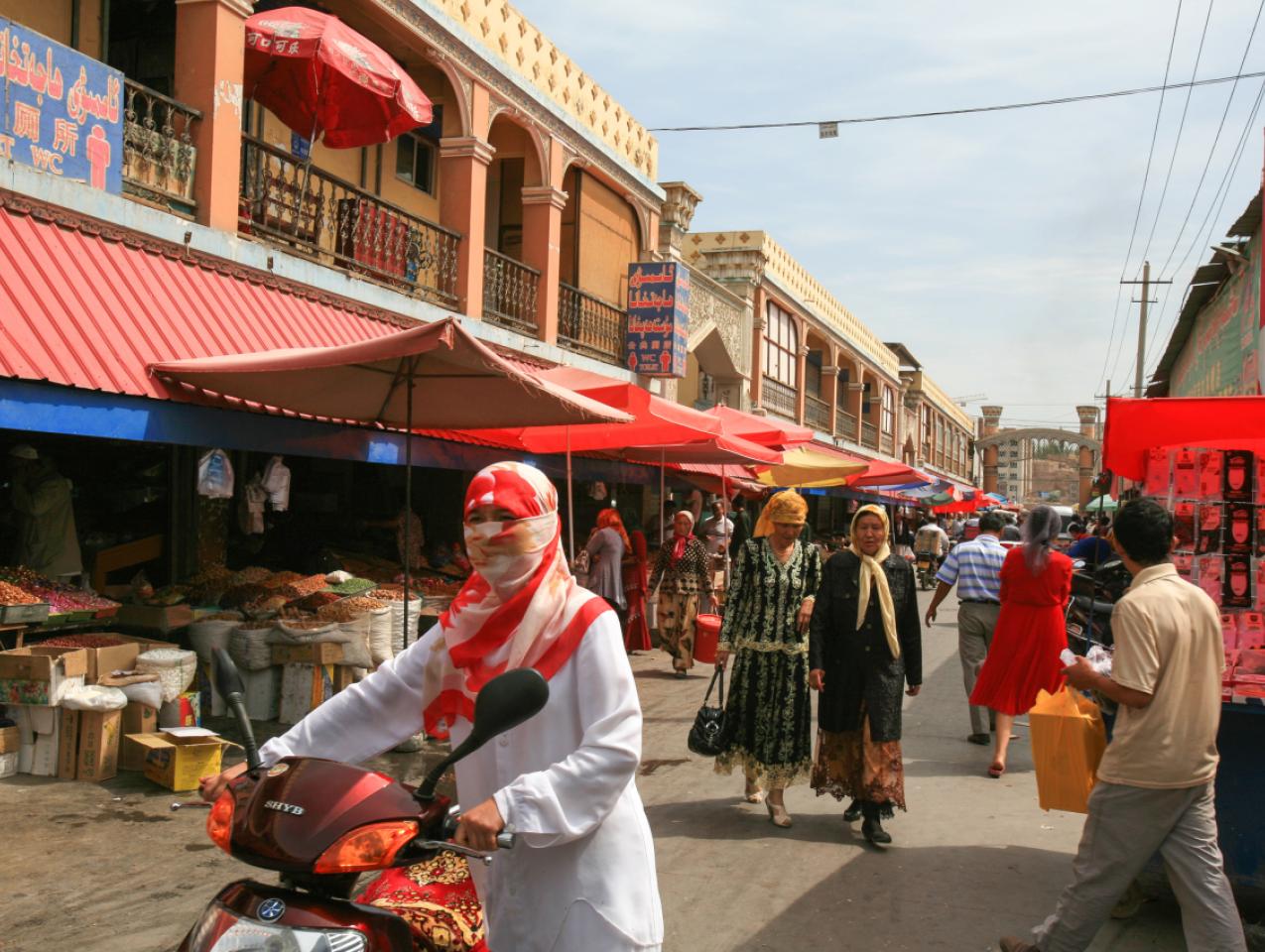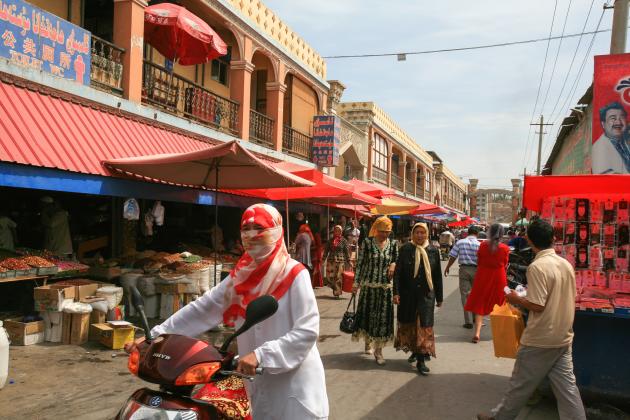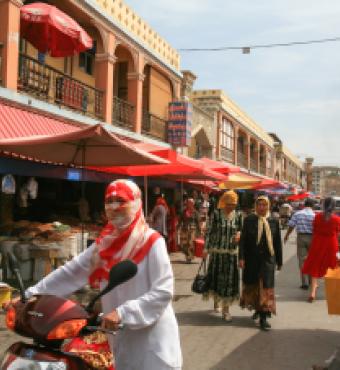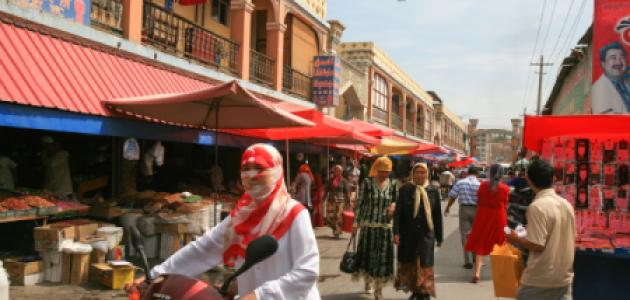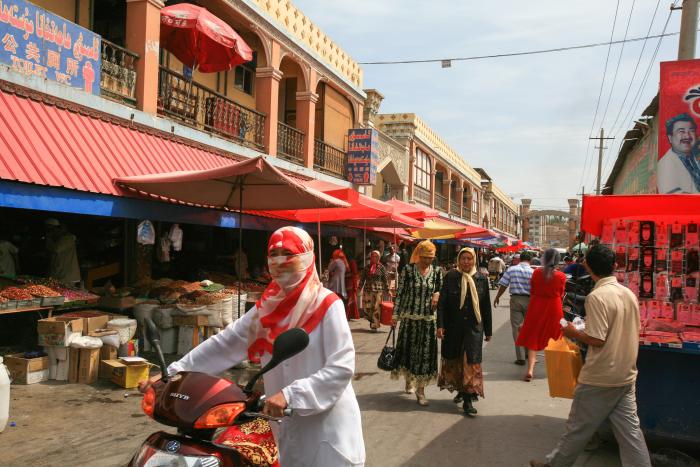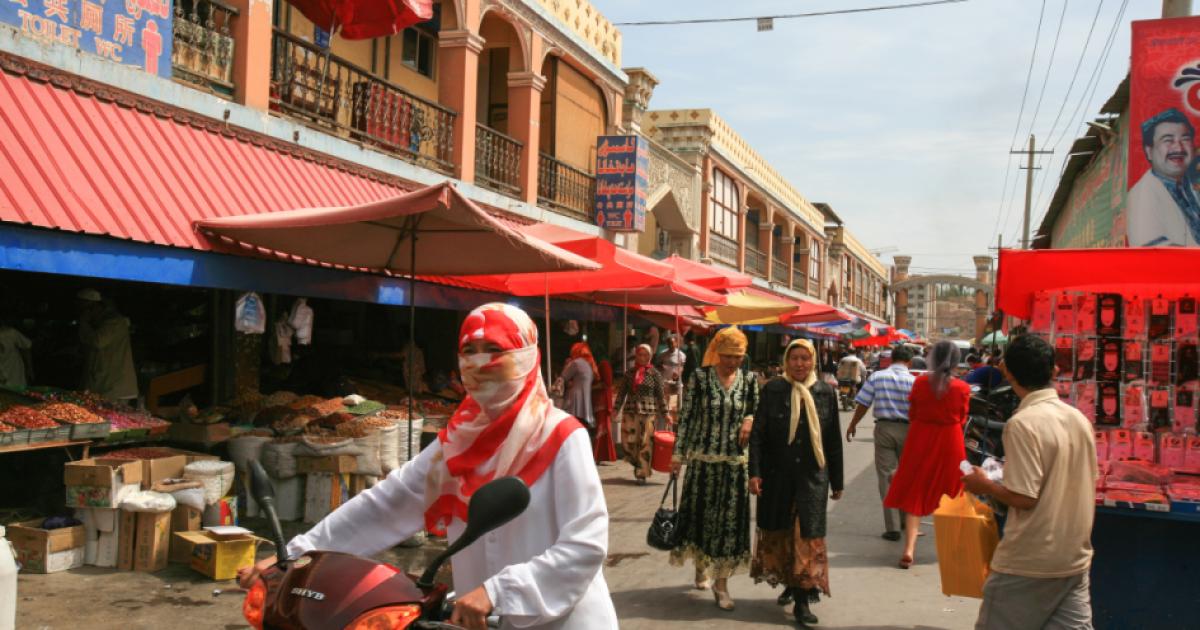Why is China taking desperate actions toward the Uyghur and the spread of radical Islam in the vast western region known as Xinjiang? Experts find little evidence directly linking jihadist-inspired radicalism to specific terrorist attacks and acts of violence in the region, which have been growing over the last decade. Beginning in early 2017, China began establishing innumerable “re-education centers,” sweeping up nearly 1 million Uyghur and other Muslim minorities, by some estimates, almost 1/10th of their population. China is not just “striking hard” (the slogan that has been used to describe the central Government’s pacification program over the past ten years) at separatists, but may be attempting to completely stamp out once and for all any potential source of resistance to Chinese rule in the region. China seems immune to criticism on this issue and denies reports of harsh treatment, leading to increased international condemnation and claims of widespread human rights violations. The United Nation’s Committee on the Elimination of Racial Discrimination expressed concern that China’s treatment of the Uyghurs had turned the Region into a “massive internment camp.”1 As co-Chairs of the United States’ Congressional-Executive Commission on China, Senator Marco Rubio and Representative Chris Smith have “raised an alarm” over the “deteriorating human rights situation in Xinjiang” due to its harsh treatment of accused separatists in Xinjiang.2 At the same time, China has supported the West in its war on terrorism and has jointly cooperated in the international campaign. Recognizing the strategic nature of the region, and its huge economic under-development, in 2013 President Xi Jinping launched the behemoth “Belt and Road Initiative.” Five years into this vast 1.4 trillion (US) dollar program, involving 74 nations across Eurasia, the Middle East, and even Africa, challenges have escalated and serious questions emerged.
After denying the problem for decades and stressing instead China's "national unity," official reports have widely publicized terrorist activities in the western province officially known as the Xinjiang Uyghur Autonomous Region. In northwestern Xinjiang (which means “new region” in Chinese), China’s Foreign Ministry and the People’s Daily have documented an on-going series of incidents of terrorism and separatism since the uprising in the Xinjiang town of Yining (Ghulja) in February 1997, with multiple crackdowns and arrests that have rounded up thousands of terrorist suspects, numerous weapons caches, and printed documents allegedly outlining future public acts of violence. Amnesty International has claimed that these arrests have led to hurried public trials and immediate, summary executions of possibly thousands of locals. Fears of Taliban incursions through the Wakhan corridor where Xinjiang shares a narrow border with Afghanistan, or even from northern Waziristan across the Sino-Pakistan border, have contributed to increased Chinese security forces and military exercises, beginning just after 9/11. China dramatically increased militarization of the region since the largest civil uprising in the PRC’s history occurred on July 5, 2009 in Urumqi, leading officially to 197 deaths and 1,721 injuries, some of them on live CCTV, which heavily covered the event. Shaken by the extraordinary scale of vehemence and violence during that “mass incident,” the state engaged in a series of policy reviews, leading to the appointment of Chen Quanguo, originally Party Secretary of Tibet, as the new ruler of Xinjiang. Chen instituted widespread security and “outrageous” surveillance techniques, involving big data gleaned from widespread facial recognition, cell phone monitoring, DNA harvesting, and video surveillance technologies.3 These information gathering and intimidation strategies have extended China’s reach globally as they have sought to reign in the Uyghur diaspora and their contacts, with numbers estimated at well over 1 million.
Julia Famularo, a researcher with Project 2049, notes that international campaigns for Uyghur human rights and possible independence have become increasingly vocal and well organized through the deft use of social media.4 The establishment of a Concerned Xinjiang Scholars network has advocated for the application of the Magnitsky Act against 10 named Chinese officials, including Chen Quanguo, modeled after the United States’ listing of four Myanmar leaders held to be responsible for the Muslim minority Rohingya attacks.5 Notably, the elected chair of the World Uyghur Congress, based in Munich, is now Mr. Dolkun Isa, whose mother died this July in a re-education camp in Urumqi.6[6]Isa replaced Rebiya Kadeer as the leader of the Uyghur umbrella organization in a democratic electoral process that brought Uyghur delegates together from over 20 countries. Ms. Kadeer, a five-time Nobel Peace Prize nominee, and herself released from Chinese prison in 2005 under pressure from President George W. Bush and Condoleezza Rice, is still widely recognized as a powerful voice among the Uyghur exile community advocating for greater Uyghur autonomy and a peaceful resolution of the conflicts. While often divided over the future of their homeland, there are now upwards of 50 international organizations and web sites working for the independence of “Eastern Turkistan,” based in Almaty, Munich, Istanbul, Melbourne, Tokyo, Washington, DC and New York, none of which is known to advocate for radical Islam or an Islamic state in the region.
Yet world Muslims are growing increasingly alarmed over China’s treatment of its nearly 22 million Muslims. This is in spite of muted responses from all Middle Eastern governments, which most assume is largely due to their increased reliance upon Chinese investment. The so-called East Turkestan Islamic Movement (ETIM) is the best known entity supporting violence against Chinese rule, but there are several others according to specialists. Many believe ETIM was chosen almost at random to justify further crackdowns in a region that had been relatively peaceful until the late 1990s, and largely pacified in the early 2000s. With the rise of ISIS in the Middle East, there have been numerous reports of Uyghur volunteers in Syria fighting on the behalf of ISIS and other rebel groups such as Al Nusra.7 This further inflamed Chinese Islamophobia and fears of trained homegrown terrorists returning to wreak havoc throughout China. However, there has been no evidence yet that organized jihadist attacks have occurred or whether Islam-inspired terrorists can coordinate violent incidents in the Chinese security state as they have managed to do in Europe and South Asia.
It is evident that violence in the region has been expanding even beyond Xinjiang since 9/11, and that China is taking advantage of the international war on terrorism to attempt to eradicate a domestic problem, paving the way for a stabile corridor to expand its Belt and Road Initiative. There seems to be no way of stopping China’s Eurasian development juggernaut, but recent protests and attacks in South Asia, Sri Lanka, and even Malaysia’s refusal to accept several Chinese contracts, indicate Xi may be forced to throttle back.
Such as they are, China's Uyghur separatists are small in number, poorly equipped, loosely linked, and vastly out-gunned by the People's Liberation Army and People's Police. And it is important to note that though sometimes disgruntled about their own rights and religious restrictions, China’s nine other official Muslim minorities do not in general support Uyghur separatism. Non-Uyghur support for separatist activities, particularly in Xinjiang and other border regions, is rare, perhaps due to widespread popular awareness of the economic disparity between these regions and their foreign neighbors, including Tadjikistan, Kygyzstan, Pakistan, and especially Afghanistan. Memories are still vivid of mass starvation and widespread destruction during the Sino-Japanese war and warlord conflicts in the first half of this century, including intra-Muslim and Muslim-Chinese atrocities, calling to mind the chaotic horrors of the Cultural Revolution. Uyghur activists have noted the striking similarities between current re-education techniques and the thought reform purges of Chairman Mao’s Red Guard. Many Uyghur activists and those sympathetic to their complaints are calling not for actual independence, but often express concerns over environmental degradation, nuclear testing, restrictions on religious freedom, and the lack of economic parity with the mostly Han migrants to the Region. Many minority activists are advocating for "real" autonomy, a greater voice in their own affairs, and the free practice of religion according to Chinese law, noting that all five of the Autonomous Regions are led by First Party Secretaries who are Han Chinese with little connection to their Regions. As Chinese scholars Chenggang Guo and Zhang Fengmei have noted, the relatively free practice of five official religions (including Islam), protected by China’s constitution, has been largely tolerated if disassociated from political activism.8 This has now changed dramatically as other Muslims, including the more peaceful Hui Muslims, the largest and most widespread Muslim minority in China, complain of mosque closures, restrictions on religious practice, and growing suspicion of their loyalties, not to mention the on-going repression of Tibetans, Falun Gong practitioners, Protestants and Catholics under Xi Jinping’s increasingly authoritarian rule. China’s many progressive policies, especially its enormous domestic and international economic investment, along with its extraordinarily heavy repression, have not eradicated tensions and unrest, which continue to simmer in the region according to travelers’ reports. Many fear these policies will only drive China’s Muslims into the arms of radical Islamist inspired millenarianism. China needs new approaches to resolve ethnic and religious conflicts in the region. Top-down Marxist and Keynesian economic programs are not enough. New strategies must be considered if, as Xi Jinping declared in Davos, China wants to take its developmental model global.9[9]China is a sovereign state, but as it exerts itself well beyond its borders, it is increasingly facing tremendous domestic challenges from trans-local migration, economic imbalance, and ethnoreligious unrest. Thanks to Xi Jinping’s grand initiative, this ancient Silk Road crossroad may very well be reemerging as, to quote Owen Lattimore, the new “pivot of Asia.”10[10]
Dru C. Gladney is Professor of Anthropology at Pomona College in Claremont, California and recent President of the Pacific Basin Institute. He is author of the award-winning book, Muslim Chinese: Ethnic Nationalism in the People's Republic (Harvard University Press, 1996, 2nd edition).







